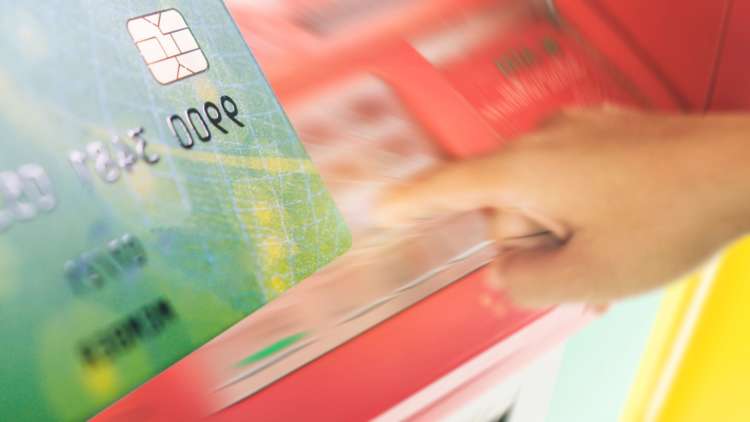Banking
The Future of ATMs in Banking

By Ivan Kot, IT Solution Manager at Itransition
After more than 50 years since its adoption, ATM remains a core banking touchpoint with the consumer. What was first introduced as just a convenient cash withdrawal unit has now become the second most important self-service channel after mobile and online banking.
For example, US-based Cardtronics, which operates 285,000 ATMs across 10 countries, reports that in June 2020, the total amount of cash withdrawn has increased by approximately 10% compared to June 2019.
While ATMs have seen a sufficient number of upgrades over the past fifty years, the industry now begs for innovative solutions rather than optimizations of existing processes. With recent advances in financial software development and the universal digitization trend, the ATM industry now explores new promising opportunities.
Data analytics
An increasing amount of banking institutions are starting to look at ATM as an important data source, which enables them to track consumer data and elevate the customer experience. Modern ATMs can collect elaborate data on unit usage, including withdrawal frequency and amounts. This, in turn, allows banks to forecast ATM cash demand.
Although such initiatives have been on banks’ agenda for a few years now, the increasing accessibility of machine learning algorithms enables much more precise forecasting and less burdensome implementation. For example, SAS Forecast Server is an automatic forecasting tool that is capable of predicting future demand based on historical data. The company has collaborated with DBS Bank in Singapore, which has a network of 1,100 ATMs. Since the software adoption, the bank has seen a yearly 350,000 decrease in the number of customers impacted by ATM replenishment.
Moreover, the ubiquitous digital connectivity allows banks to remotely assess an ATM’s technical condition. For example, IBM has developed predictive maintenance software, allowing banks to significantly decrease downtimes and associated economic drawbacks. A Standard Analytical Model considers the condition of every essential component based on service history, environmental factors, log and error messages, and other degradation cues.
IBM claims that with a solid data ecosystem in place, their ML-powered forecasting model can identify potential failures a week before they happen. When IBM’s system identifies a service requirement, it can automatically notify the bank’s technicians to order parts and schedule maintenance. Furthermore, the software can assist the maintenance team in identifying the root cause of the problem by analyzing historical data and preparing a repair plan.
Intel’s product, Active Management Technology, is similar but goes even further and allows IT teams to remotely manage devices. This proves to be especially useful when the problem is software-related. Intel claims that in the case of a corrupted operating system, reinstallation can be done remotely, which keeps downtime costs to a minimum. Additionally, remote updates ensure that all ATMs, even those in distant locations, are equipped with the latest technology to combat cyberattacks and provide the best possible customer experience.
With increasing amounts of data that financial institutions are now able to collect, data analytics and AI are the only tools that can turn this data into actionable insights, enabling banks to tap into customer-centered approaches. Essentially, every ATM interaction is the opportunity for a bank to engage with the customer in a meaningful way. Anticipating customers’ future needs and wants allows banks to market the most relevant services at the right time. For example, Diebold Nixdorf has developed the marketing campaign management platform Vynamic Marketing, which allows banks to automate and personalize ATM advertising.
Cardless ATMs and facial recognition
With the proliferation of innovative technologies like computer vision, ATM capabilities can expand even further while enhancing security. For example, Intel’s RealSense camera technology can now verify that the card belongs to the person who withdraws the money. The use of biometric authentication also implies that the consumer can withdraw cash with no card or PIN, which drives convenience up. This is especially helpful in the pandemic, as physical contact with ATM surfaces can be minimized.
With companies becoming more attracted to the idea of contactless customer service, physical ID checks are becoming less common. With the easily accessible digital tools, fraudsters have learned to use this opportunity to create identities of unreal people, enabling them to take out loans and withdraw money. Computer-vision-enabled ATMs could serve as another security layer, which can confirm the new customer’s identity without the need to be physically present in the branch.
Summing up
Undeniably, it has been one of the toughest years for the ATM industry. Since the beginning of the pandemic, people have naturally started to lean more toward electronic payments. When in March last year the World Health Organization advised people to wash their hands after handling cash, the media quickly turned this mere precaution into the claim that banknotes are among the main virus carriers, which caused major distress in the industry. While concepts like cardless ATMs have been on banks’ agendas for years, the pandemic has turned that interest into action, propelling the industry innovation.
Admittedly, ATMs have also become critical communication links between the bank and the consumer. What previously was a simple cash dispensing machine has now become a self-service tool, which can guide the consumer through the entire financial journey. With the introduction of data analytics, customers’ interactions with ATMs can be personalized, increasing their loyalty and providing banks with yet another advertising channel.

-
Business4 days ago
docStribute appoints ex-Group CIO of Newcastle Building Society as Non-Executive Director
-
Technology4 days ago
How to Use AI to Optimize Customer Relationships
-
Business4 days ago
What Every Small Nonprofit Needs to Know About Form 990-N
-
Finance4 days ago
stc Bahrain and Aleph Zero Partner to Advance Blockchain DePIN Across the Gulf Region







